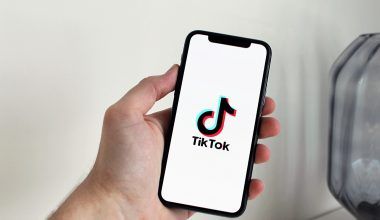If you’ve ever wondered how much artists make on Spotify, you’re not alone. Streaming platforms like Spotify have transformed the music industry, offering musicians a way to share their work globally. But for many artists, the question remains: does Spotify really pay enough?
To put it simply, Spotify’s payouts are not as straightforward as you might think. The earnings vary widely depending on a range of factors. This guide will break it all down, so you’ll have a clear understanding of how Spotify royalties work and what to expect if you’re an artist hoping to make money through this platform.
How Spotify Pays Artists
Spotify operates on a system called pro-rata royalty distribution. In this system, Spotify collects money from its users through subscription fees and ad revenue. Then, they pool all the revenue together and distribute it based on streams.
For example, if your music accounts for 1% of all Spotify streams in a month, you’ll earn 1% of the total payout to artists for that month. It sounds fair on paper, but the details can get tricky.
Spotify doesn’t pay artists directly. Instead, payments go to the rights holders, which could include record labels, distributors, or publishers. These intermediaries take a cut before the artist receives their share. This is why artists’ earnings on Spotify can vary so much.
How Much Does Spotify Pay Per Stream?
The amount Spotify pays per stream isn’t fixed. On average, artists earn between $0.003 and $0.005 per stream. That means you need around 250 to 300 streams to make just $1.
This rate depends on factors like:
- The listener’s country
- Whether the stream comes from a premium or free account
- The artist’s royalty agreement
For instance, streams from countries with lower subscription rates may pay less, while streams from premium users generally pay more than those from free users.
Factors That Influence Spotify Earnings
It’s important to understand why there’s no universal rate for Spotify payouts. Here are the key factors that influence how much artists make on Spotify:
1. Listener Geography
Spotify’s subscription costs and ad revenue vary by country. For example, a premium subscription in the U.S. costs more than one in India. Consequently, streams from listeners in higher-paying countries contribute more to the royalty pool.
2. Subscription Type
Spotify divides its revenue between free-tier and premium-tier users. Since premium users pay a subscription fee, their streams are more valuable to artists than those from free-tier listeners who rely on ads.
3. Label and Distribution Agreements
If you’re signed to a record label, they’ll likely take a portion of your earnings. Similarly, if you use a distributor to upload your music to Spotify, they might charge a fee or take a percentage of your royalties.
4. Total Streams
The more streams you get, the larger your share of Spotify’s royalty pool. However, achieving millions of streams can be a challenge, especially for independent or new artists.
Breaking Down an Example
Let’s say Spotify generates $1 billion in revenue in a month and allocates 70% of it ($700 million) to royalties. If your music gets 0.01% of all Spotify streams, you’ll earn $70,000 for that month. But remember, this amount will be split with your label or distributor if you’re not independent.
How Independent Artists Can Maximize Spotify Earnings
Being an independent artist has its perks. You get to keep a bigger portion of your earnings because there’s no label taking a cut. However, you’ll need to work harder to promote your music and attract listeners. Here are some tips to help:
1. Use a Reputable Distributor
Platforms like DistroKid, CD Baby, and TuneCore can help you get your music on Spotify. They charge a fee but don’t take a percentage of your earnings, which is great for independent artists.
2. Promote Your Music
Social media is a powerful tool for promoting your music. Share snippets, create engaging posts, and collaborate with other artists to reach a wider audience.
3. Create Playlists
Spotify’s playlist culture is huge. Try to get your music added to popular playlists, or create your own to showcase your songs alongside other tracks that fit your style.
4. Engage with Fans
Engaging directly with fans can help build a loyal audience. Use features like Spotify’s “Canvas” to add visual elements to your songs or share stories behind your music.
The Reality of Making a Living on Spotify
For most artists, Spotify royalties alone aren’t enough to make a living. Even with millions of streams, the payout might not cover all your expenses. That’s why many musicians diversify their income by:
- Selling merchandise
- Touring and performing live
- Licensing their music for TV, movies, and ads
- Crowdfunding through platforms like Patreon
Should Artists Rely on Spotify for Income?
The short answer is no. While Spotify is a great platform for exposure, it’s not a guaranteed source of substantial income. Treat it as one part of a larger strategy to build your music career.
Instead of focusing solely on Spotify, consider how you can use it to drive listeners to other revenue streams, like merchandise or ticket sales. Think of Spotify as a way to connect with fans and grow your brand.
Wrapping It Up
So, how much do artists make on Spotify? It depends on a variety of factors, including the number of streams, listener location, and your agreements with labels or distributors. While Spotify payouts may not be huge, they can add up over time, especially if you’re actively promoting your music and engaging with your audience.
The key is to think of Spotify as a tool rather than a sole income source. By leveraging its potential and diversifying your revenue streams, you’ll have a better chance of building a sustainable career in music.
If you’re an artist or a music fan curious about Spotify royalties, keep these insights in mind. The music industry is changing rapidly, and platforms like Spotify are just one piece of the puzzle. Stay creative, stay motivated, and keep sharing your music with the world!
For further reading, explore these related articles:
- All About Major Lazer Songs: Why Everyone Loves Their Music
- Exploring Ed Sheeran’s South of the Border Lyrics
For additional resources on music marketing and distribution, visit DMT Records Pvt. Ltd..






